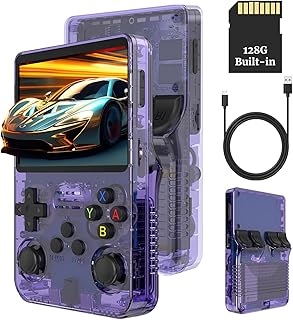Nintendo, a renowned player in the gaming industry, has a rich history that dates back to the late 1800s when it began as a playing-card company. Fast forward to the early 1980s, Nintendo played a pivotal role in rescuing the video game industry from a financial downturn. Since then, the company has established itself as a prominent console manufacturer, releasing a range of innovative hardware over the years.
One of Nintendo’s initial forays into the video game market was with the Color TV-Game series, developed in collaboration with Mitsubishi. These consoles, exclusively available in Japan, featured Pong-inspired mini-games and marked Nintendo’s early steps in the gaming industry. The Color TV-Game series set the stage for Nintendo’s future hardware innovations.
In 1983, Nintendo introduced the Family Computer, or Famicom, in Japan, which later underwent a redesign and was launched as the Nintendo Entertainment System (NES) in North America. The NES, with its 8-bit architecture and iconic rectangular controllers, became a monumental success, selling over 61.9 million units and reviving the North American video game market.
Following the NES, Nintendo released the Family Computer Disk System, an add-on peripheral that supported proprietary floppy disks and introduced innovative features like game saves and rewritable games. The NES’s success paved the way for the Super Famicom and its Western counterpart, the Super Nintendo Entertainment System (SNES), which boasted improved graphics and sound capabilities, along with iconic games like Super Mario World and The Legend of Zelda: A Link to the Past.
Nintendo’s next venture, the Nintendo 64 (N64), launched in 1996, featuring a 64-bit processor and groundbreaking titles such as Super Mario 64 and The Legend of Zelda: Ocarina of Time. Despite its technical prowess, the N64 faced challenges due to its cartridge format, which limited storage capacity and deterred third-party developers.
In subsequent years, Nintendo released consoles like the GameCube, Wii, and Wii U, each bringing unique features and gameplay experiences to the market. The Wii, in particular, revolutionized gaming with its motion controls and popular titles like Wii Sports and Super Mario Galaxy.
In 2017, Nintendo unveiled the Nintendo Switch, a hybrid console that can be used both as a handheld device and a home console. The Switch’s innovative design, coupled with critically acclaimed games like The Legend of Zelda: Breath of the Wild and Super Mario Odyssey, propelled it to commercial success, outselling its predecessor, the Wii U.
Continuing its legacy of innovation, Nintendo announced the Switch OLED model, featuring an OLED screen, enhanced audio, and improved functionality. The new model bridges the gap between the existing Switch and potential future upgrades, hinting at Nintendo’s commitment to evolving its hardware offerings.
With a history steeped in innovation and creativity, Nintendo’s evolution of consoles reflects its dedication to pushing the boundaries of gaming technology and delivering engaging experiences to players worldwide.
📰 Related Articles
- Workplace Learning Trends 2025: Embracing Innovation for Organizational Success
- Trainer Jack Smith’s Legacy in Greyhound Racing Evolution
- Resurgence of Grills: Hip-Hop Icons Embrace Cultural Legacy and Innovation
- Resilience and Evolution: Thrash Metal’s Enduring Legacy Explored
- Paraplanners Embrace Tech Evolution for Future Financial Success






